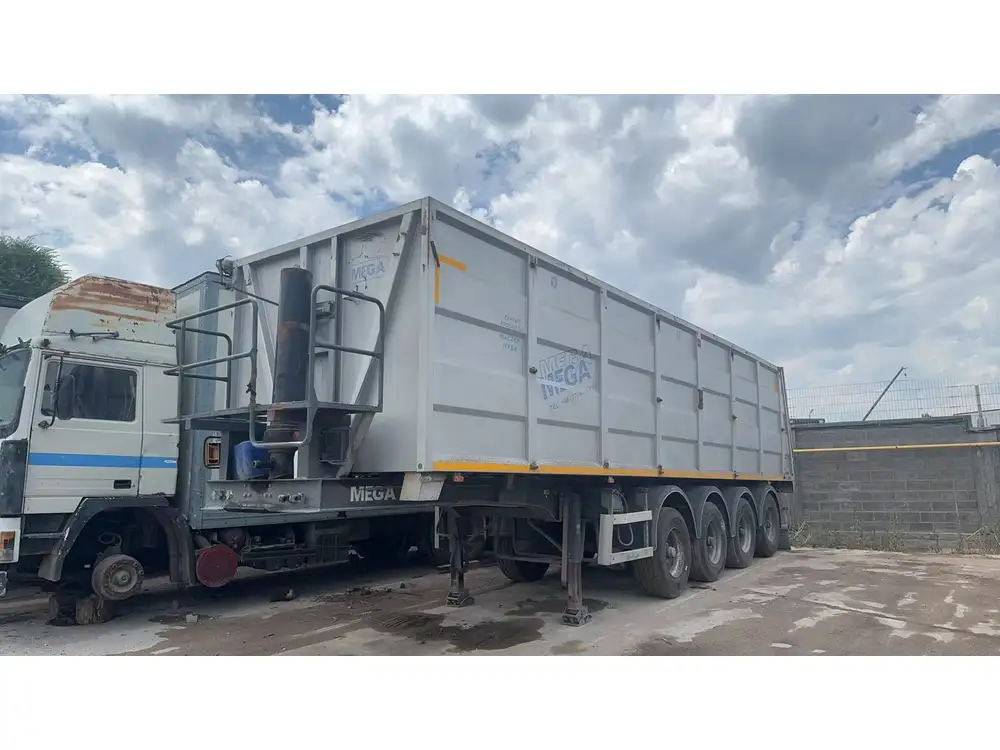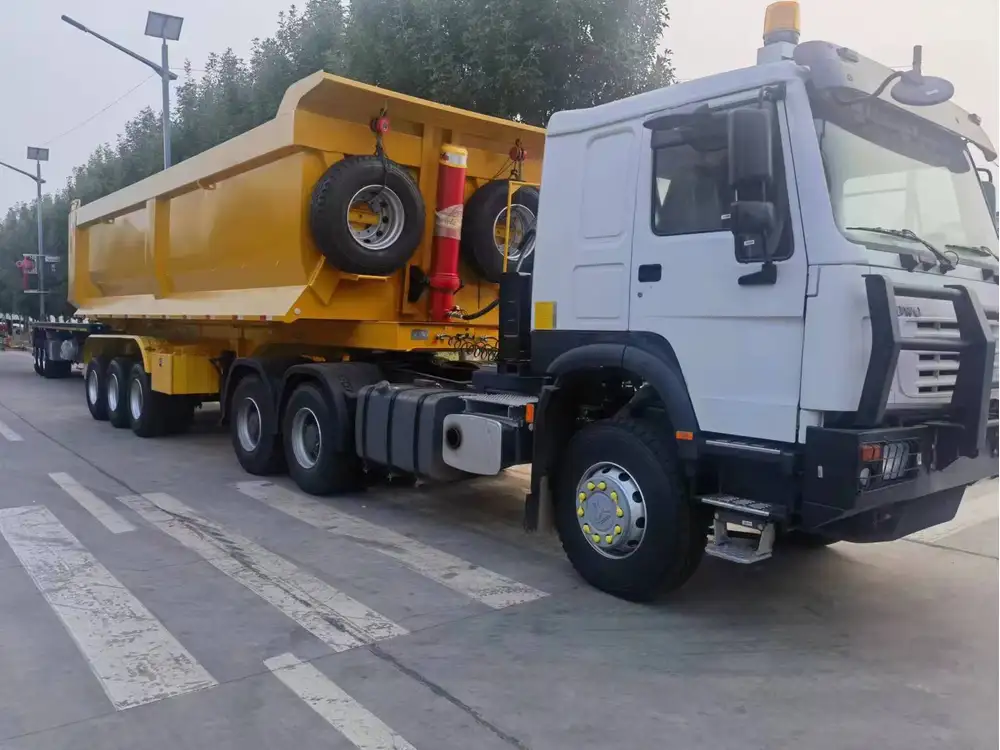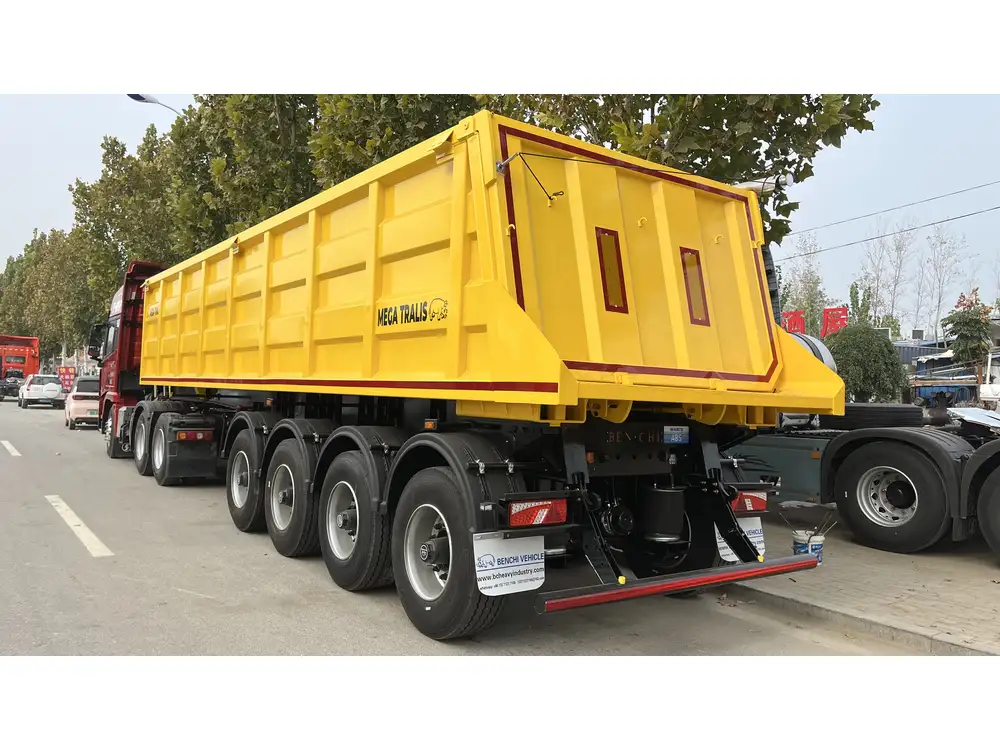Dump trailers serve as versatile tools in various industries, from construction to landscaping and beyond. Their design allows for easy loading, unloading, and transporting of a wide range of materials, making them indispensable in project management. This guide will explore the intricate mechanics of operating a dump trailer effectively, addressing potential user issues while providing actionable insights to enhance your productivity.
Understanding Dump Trailers: An Overview
What is a Dump Trailer?
A dump trailer is essentially a trailer equipped with a hydraulic lift that can be raised to dump its contents. These trailers come in various sizes, types, and weight capacities and are engineered to accommodate different materials, including dirt, gravel, debris, and more.
| Type | Capacity | Ideal Use |
|---|---|---|
| Single Axle | Up to 6,000 lbs | Light materials (soil, mulch) |
| Tandem Axle | 6,000 – 14,000 lbs | Medium to heavy loads (sand, gravel) |
| Triple Axle | 14,000+ lbs | Heavy-duty applications (construction debris) |

Key Components of a Dump Trailer
- Frame: The backbone that determines the load capacity and durability.
- Axles: Affect stability and weight distribution.
- Hydraulic System: The lifting mechanism that allows for controlled dumping.
- Bed: The area where materials are loaded, available in different lengths and widths.
- Ramp: Provides an easier loading process for wheeled equipment.
Preparing to Use a Dump Trailer: Essential Steps
1. Safety Check: Before You Begin
Before operating your dump trailer, it’s crucial to perform a comprehensive safety check. Administer the following actions to mitigate risks:
- Inspect the Hydraulic System: Check for leaks or wear on hoses and cylinders.
- Test the Brakes: Ensure that both the trailer’s and tow vehicle’s brakes are functional.
- Examine the Tires: Look for proper inflation and tread wear.
- Assess the Coupling Mechanism: Verify that the trailer is securely hitched to the towing vehicle.

2. Understanding Weight Limits and Distribution
Every dump trailer comes with a specific weight limit often marked on the frame. Ignoring these limits can lead to hazardous driving conditions, damaging the trailer or the towing vehicle. Load distribution is also paramount; uneven loads can lead to swaying and control issues while on the road.
| Weight Limit | Trailer Type | Recommended Load Distribution |
|---|---|---|
| Up to 6,000 lbs | Single Axle | 60% front, 40% rear |
| 6,000 – 14,000 lbs | Tandem Axle | Even distribution across axles |
| 14,000+ lbs | Triple Axle | 25% on each axle |
Operating Your Dump Trailer: Step-by-Step Instructions
1. Loading the Dump Trailer
Loading a dump trailer can be straightforward if approached with care. Follow these guidelines for effective loading:
- Position the Trailer: Park on flat ground to avoid instability.
- Load Materials: Use a loader, shovel, or manual labor to introduce materials into the trailer bed.
- Even Distribution: As discussed, strive for even load placement to maintain balance.

Tips for Efficient Loading
- Keep the Load Low: This reduces the risk of tipping while in transit.
- Avoid Overloading: Stay within specified weight limits to ensure safety.
2. Securing Your Load
Once loaded, securing your material is essential to prevent spillage during transport. Methods to consider include:
- Tarps: Covering materials with a tarp can protect from weather and ensure nothing falls out during transit.
- Straps: Ratchet straps can secure loose loads effectively, particularly with smaller items or loose debris.
3. Towing Your Dump Trailer
With everything loaded and secured, the next task is to hit the road. Here are crucial considerations:
- Check Connections: Ensure the electrical, brake, and hitch connections are secure.
- Driving Techniques: Gradually accelerate and decelerate to maintain stability.
- Monitor Loading while Driving: Stay alert to how the trailer behaves during turns and stops, adjusting driving style as necessary.

4. Dumping the Load
Dumping your load is one of the principal advantages of using a dump trailer. Here’s how to do it correctly:
- Select a Safe Spot: Ideally, choose a level area free from obstacles.
- Position the Tow Vehicle: Make sure the towing vehicle is parked and properly aligned with the dump area.
- Engage the hydraulic system: Use the control switch to lift the dump bed, bear in mind the tilt angle and the load’s weight.
- Release the Load: Once elevated, the materials should flow out smoothly. Maintain control; don’t rush the process.
Caution While Dumping
- Always be aware of your surroundings. Check for people or objects in the dumping zone.
- Avoid dumping on sloped areas or near edges that may collapse.
Post-Operation Protocol: Ensuring Longevity and Efficiency

1. Regular Maintenance
To ensure the longevity of a dump trailer, commit to a rigorous maintenance routine that includes:
- Cleaning: Regularly clear debris from the bed and around the hydraulic components.
- Lubrication: Keep moving parts well-greased to prevent rust and wear.
- Hydraulic Fluid Check: Ensure the hydraulic system is filled to recommended levels.
2. Documentation and Registration
Verify that the dump trailer is registered properly and adheres to local regulations regarding construction materials and waste transport. Ensure documentation is readily available, especially if traveling across state lines.
Addressing Common User Issues

1. Operating Problems
- Hydraulic System Failure: If the bed does not lift, check for hydraulic fluid leaks and ensure that air isn’t trapped in the system.
- Brake Failure: If the brakes feel soft or unresponsive, have them checked and, if necessary, replaced.
2. Load Management
- Tip Over During Transport: Ensure weight limits are observed, and loads are well-distributed. A higher center of gravity can lead to dangerous tipping.
- Uneven Dump: If materials do not dump evenly, consider relocating the load for better balance.
Additional Tips for Enhanced Efficiency
- Time Management: Create a loading and dumping schedule to minimize down time.
- Invest in quality: Renting or buying high-quality dump trailers can lead to fewer issues and greater efficiency.

Conclusion: Mastering Dump Trailer Usage
The usage of a dump trailer, when understood and implemented correctly, can significantly improve operational efficiency, save time, and reduce physical labor involved in transporting heavy materials. By following the steps outlined in this guide, one can navigate the ins and outs of dump trailer operations with greater confidence. Remember, safety, maintenance, and proper techniques are the trifecta for mastering dump trailer use. Embrace these practices, and you’ll find that your capabilities in project management will expand significantly.
Through diligence, attention to detail, and a commitment to ongoing learning, you’ll not only elevate your use of dump trailers but also contribute to an improved project outcome, satisfying both client and operational needs. Happy hauling!



